Research Themes
Research Themes
Research groups
The Grimwade Centre for Cultural Materials Conservation is built on the conviction that culture matters to individuals and societies, and on the understanding that the University of Melbourne has a critical role to play in the articulation and preservation of culture through teaching, research and knowledge transfer.
By bringing together scientific, cultural and historical domains of practice, the Grimwade Centre seeks to advance innovation in cultural materials conservation practice to ultimately ensure our shared cultural record is sustained for future generations.
Our research groups are outlined below.
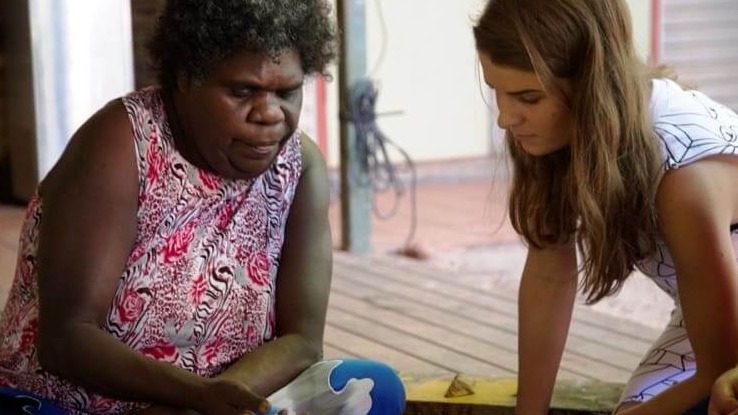
Cross-cultural conservation practices
Cultural materials are intrinsic to the identity of communities. Our research focusses on the interconnections between cultural policy, conservation and social capital and community identity, particularly in Indigenous and remote communities.
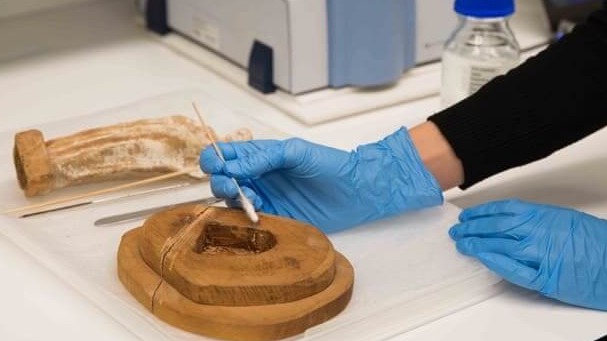
Technical studies
The Grimwade Centre’s research advances conservation methods and materials, their ageing and application properties as well the novel use of analytical instrumentation to develop new knowledge in cultural materials conservation.
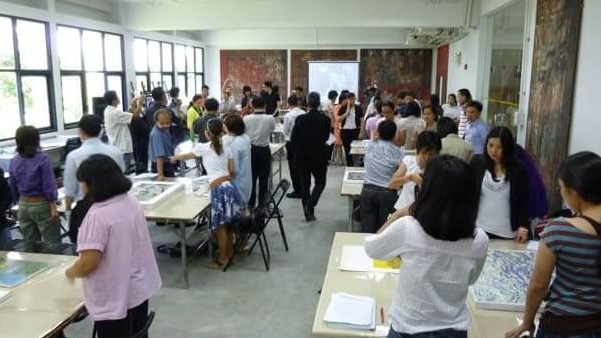
Collections and sites
Exploring the relationship between objects, knowledge, place, identity and significance through conservation inquiry.
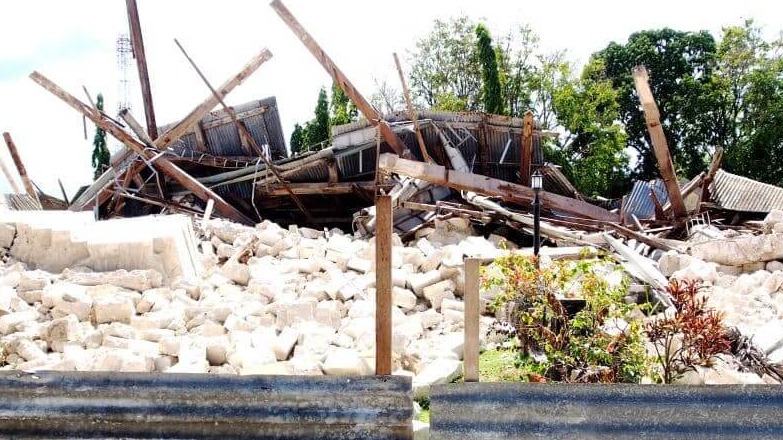
Climate, environment and sustainability
Focused on sustainable practice, the Grimwade Centre brings together cross-sectoral teams to progress solutions for environmental and climate change threats to cultural heritage.
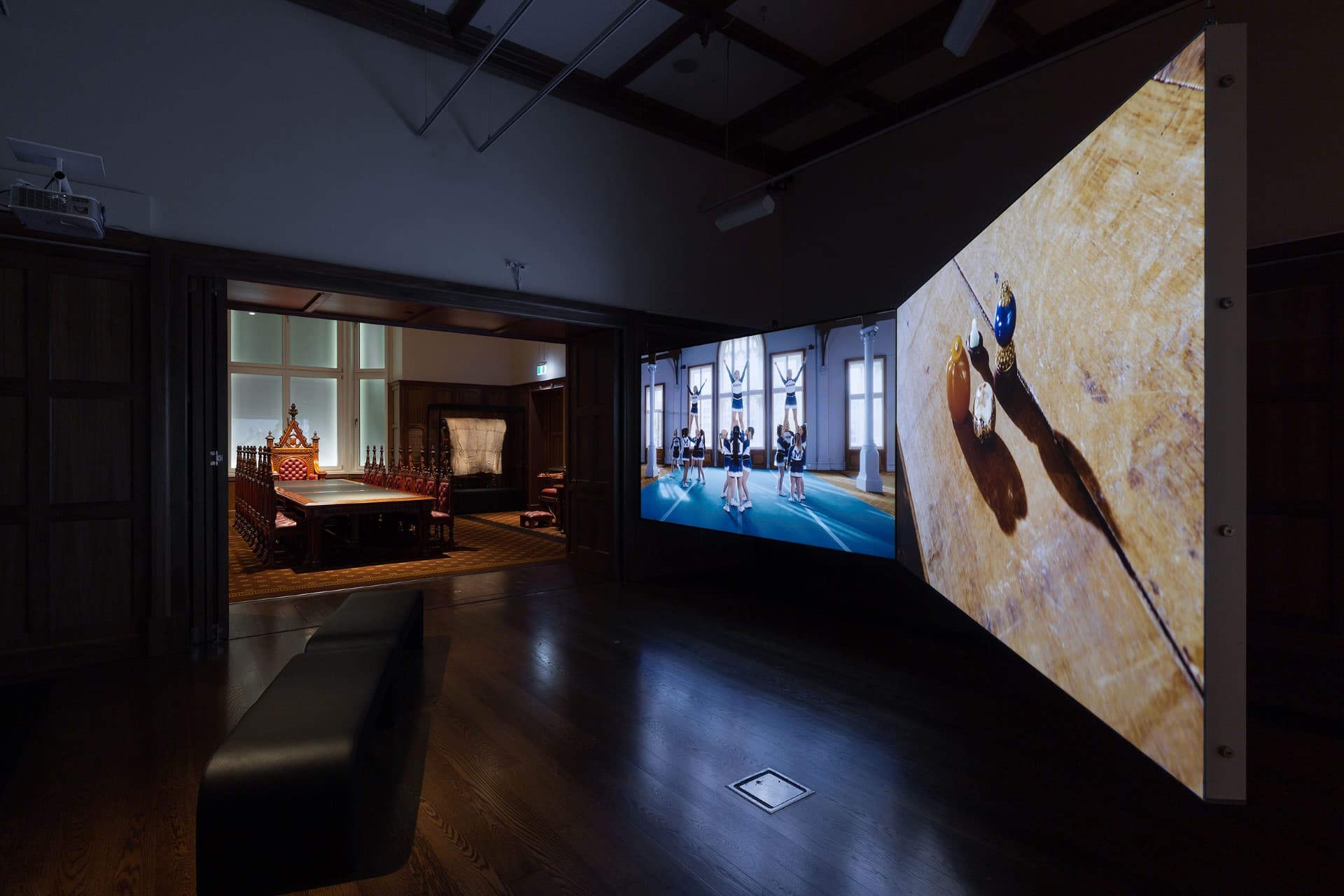
Issues in contemporary conservation
Contemporary art reflects multiple knowledge domains. Our experience and research in performance, installation and new media art utilises this multiplicity to better understand the challenges of working in contemporary art conservation.
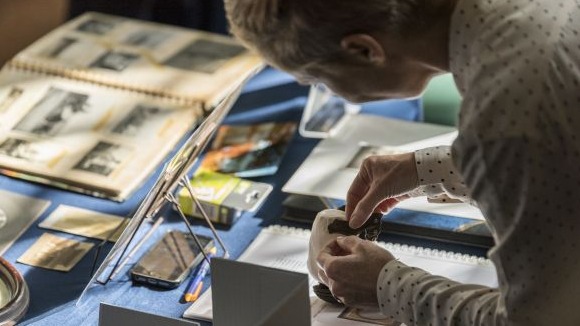
The National Conservation Program
Policy, pedagogy and program research link conservation with government and industry to build new ways of thinking about how conservation can be a national contributor to social, economic and emotional health.
Post-graduate research
2022
- Aarsen, Jordan, "An Analysis of Metal Soap Formation:A Case Study of 7 Known Model Oil Paint Samples and 3 Samples Taken From Late 19th Century and early 20th Century Oil Paintings"
- Alexander, Cody, Conserving kalikina Bornstein, Daniel, 3D Imaging of Musical Instruments: investigating 3D imaging for heritage conservation
- Bramich, Emily, Investigating and Proposing Conservation Strategies for a Ptolemaic Limestone Funerary Stela (C.332- 30 BCE) Restored in Early 20th Century
- Dacey, Emma, Malignant polymers in photographic collections: A case study of investigating polymer components of mid- to late-twentieth century photographic materials
- Davis, Rachel, Defining resilience: A history of silo art in Victoria and an investigation of paint materials
- Duckett, Georgina, Testing the Efficacy of three Essential Oils as potential green biocides for architectural stone and terracotta
- Flores, Leandra, Clear as a Gel: An Exploration of the Use of Alpha Amylase and Gellan Gum Gels to Reduce Aged Wheat Starch Paste from Watercolour Paper
- Kozyrevich, Sasha, Investigation of UV Photography in Varnish Identification Molinari, Michelle, An Investigation into Deterioration Susceptabilities of Oil Paint on Aluminium Substrates
- Poppins, Victoria, Evaluating Solid Phase Microextraction Gas Chromatography Mass Spectrometry (SPME GC/MS) analysis for identifying Volatile Organic Compounds (VOCs) in Cellulose Nitrate and Cellulose Acetate based museum objects
- Sullivan, Genevieve, Conserving The Laos Bells: Investigating Preservation Strategies for c.2000-year-old Decorative Archaeological Bronze Bells
- Walker, Isabel, A Materials Investigation of a Polychrome Guanyin Sculpture Head
- Williams, Annabelle, Conservation and materials identification of an Indian inlay table as a practice-based, owner- focused project
- Wily, Georgina, Development and application of a methodological approach to an outdoor sculpture
2021
- Bray, Vanessa, An Exploration In The Conservation of Elastic and Elastane Materials; Aging, Treatments, and Storage With Case Study: The Arts Centre Melbourne Akira Collection, Sydney Dance Company
- Bridie, Rubie, Documenting Performance: The Conservation of Performance Art Archives
- Collins, Bernadette, Preserving plastic: what we know about treating plastics in cultural heritage collections: A literature review & analysis: treatment of plastics
- Colton, Imogen, Sustainable Material Choice for Conservation: Life Cycle Assessment Methodologies in an Australian Context
- Dellas, Peter, Residual Surfactant Material: A Study of Degradation Processes on Oil Paint Films Etherington, Kerry, Penfold’s Plastics: from Utopian Promises to Invaluable Epitaphs
- Ghoukassian, Gemma, The concept of “bespoke codes of ethics” for conservation professionals: An inquiry into its benefits for an ethnographic museum
- Gonzales, Micaella Angelica, Conservation of Paper-Based and Digital Archives of Southeast Asian Modern Artists in the Collection of National Gallery Singapore
- Gralton, Elizabeth, Getting a grip on Delaware solutions in agarose: a literature review of chelators in rigid gel for paper conservation treatments
- Harrington, Freya, The Costume Collection of the Tasmanian Museum and Art Gallery, 1780s – 1920s: A collection assessment
- Hollingworth, Jayde, Intangible Cultural Heritage in Australian Fashion Hornum, Emily, Re-Enactment: A Conservation Strategy For Performance-Based Art
- Hutchinson, Rory, Green chemicals in conservation: the effectiveness of cyrene, isopropyl myristate, cyclomethicone, and dibasic ester
- Ignatia, Phoebe, Plastic Fantastic— Conserving Polymer-based Materials in Textile and Accessories Collections
- Ishiwata, Meiling, Textured Japanese Paper as a Fill Material in Leather Conservation: an Experimental Research of an Alternative to BEVA 371
- Legg, Isabelle, Whose digital heritage? Cross-cultural archiving projects in Australian Indigenous communities
- Lewis, Sunita, Cultivating Community Access via Digital Records: Facilitating Tangible and Intangible Cultural Heritage Conservation Through Increased Cross-Cultural Participation
- Lim, Cheralyn, Getting Unstuck: Conserving Two Self-adhesive Photographic Albums from the Kanamkek-Yile Ngala Museum
- Lojkine, Frances, Assess and plan for the preservation of four tukutuku from Christchurch Cathedral, New Zealand
- Mikolaitis, Manon, Persistent Preservation Standards? Time-Based Media Installations and the Shifting Paradigm of Museum and Conservation Practices
- Mitchell, Paddy, "Cultivating Community Access via Digital Records: Facilitating Tangible and Intangible Cultural Heritage Conservation Through Increased Cross-Cultural Participation"
- Pigott, Katherine, Developing conservation management plans and treatment priorities for the University’s Middle Eastern Manuscript Collection
- Revell, Monique, Keep it Separate, Keep it Safe: Exploring Rooibos Tea as an Economical and Accessible Adsorbent Alternative for Semi-synthetic Cellulose Plastics
- Scibiorski, Christopher, Flowing On From Acquisitions
- Topp, Katherine, Stakeholder Engagement and Action Heritage: Documenting the NKC collection through collaborative action research
- Veleña, Israelex, Piña as a fibre source for leaf casting: identifying its potential
- Wang, Jingwen, How can conservators work with communities whose cultural beliefs and practices are outside their own experience and knowledge?
- Wood, Lydia, Evaluating the Conservation of Plastinated Material Zeitz, Eleanor, “Saving the Nation’s Memory” and Artist’s Intent: an argument for crowd-sourced digitisation
- Zhang, Yuhong, "Care and Collection Survey of the Modern and Contemporary Chinese Women’s Dress Collection at the Baillieu Library, University of Melbourne"
2020
- Coleman, Paul, Documenting internet-based art: Conceptual frameworks for documentation as conservation Davies, Jackson, Reconstructing E. Phillips Fox’s Rocks and Sea (c.1911)
- Drury, Kathryn, Materials used as linings for the temporary and permanent backfill/reburial of Archaeological Sites Dyer, Jesse, hyperjpegness — conserving the velocity of digital images
- Fitrani, Laila Nurul, Identifying Degradation of Unsaturated Polyester Resin in Indonesian Artist’s Material
- Flanagan, Denise, The Australian Institute for the Conservation of Cultural Material and its impact: past, present and future
- Lambert, Kate, Considerations and recommendations for improving the condition and display/storage of the Cranbourne Meteorite at the University of Melbourne: An international comparative study
- Mansfield, Lisa, Art in flux: stewarding Learning to Love You More along its life trajectory McKenzie, Julia, Emerging Shifts In Conservation Practice: An Overview Morrison, Emma, The Land of Streams Glen Moriston Invernesshire 1881 Putri, Gadis Fitriana, Art Material Availability in 20th century Southeast Asia: Japan-Occupied Indonesia, 1942-45
- Ranisau, Amalia, Sign of the Sun: Determining the Original Binding for the Grammar Book Whitintoni Editio cum interpretamento Francisci Nigri Diomedes de Accentu, Written by Robert Whittington (c. 1480-1553) and Printed by Wynkyn de Worde (ca.-1534) 1519
- Raynolds, Louella, The Support Materials of Australian Women War Artists: Investigations into Supply and Choice Concerning Works in Oil by Nora Heysen, Stella Bowen, and Sybil Craig (1943-1946)
- Song, Sandra, Investigating KARIBARI, the Drying Boards and their Materials Used Thomev, Velika, Climate Change and Cultural Material Conservation in Australia
- Walker, Isabella, The Conservation of Conservation: The Excavation, Preservation and Restoration of Conservation's Past Through Historiographical Analysis
- Welsh, Lucy, The Conservation of Rock-Art at Gariwerd: A response to recreational impacts
- Yee, Sandra, Investigating anoxic storage methods for the long-term preservation of a large, fragile work on paper by Winsome Jobling
2019
- Melissa Holt, Technical examination and treatment options for the pillar blocks from the Tomb Chapel of Mose (18th- 20th Dynasty).
- Annabel Livingstone, Version Control: How and Why Things are Conserved
- Bella Lipson-Smith, Version-control: a study of why and how things are conserved at a particular moment and the extent to which a model based on version-control might effect change in processes both within and beyond conservation.
- Michael K. Davies, GAPS IN THE LEAVES: A re-conceptualisation of the item record, as a public document, based on the version control system.
- Margaret Barclay, Sustaining a future: An examination of sustainable collection management at the Castlemaine Art Museum
- Heather Berry, Closing the Gap: Conservation and Community Run Museums
- Grace Barrand, Targeting Specialist Skill Deficiencies through Work Integrated Learning: a Case Study in Frames Conservation at the Art Gallery of New South Wales
- Rebecca Delaney, Artists acrylic paints exposed to high humidities: Evaluating suitable cleaning systems to remove dirt pick-up
- Anurati Krishnamurthy, Mould removal techniques on artist acrylic paint: comparing the use of 70% ethanol in water against enzymatic cleaning and the use of short wavelength ultraviolet (UV) radiation.
- Jessica Walsh, Cleaning painted surfaces with green chemicals: Investigating the sustainable removal of natural and synthetic resin varnishes from oil-based painted surfaces
- Lia Sumichan, Affandi’s Materials and Techniques: A Preliminary Technical Art Study of Paintings from the 1950s Catherine Gill, Investigation into and proposed conservation of the portrait "Jack Wetherly a Victorian Native"
- Jessica Doyle, Daylesford Historical Society and Museum: Developing sustainable actions for the management of a small community museum.
- Rong Wei Sim, Examining and investigating the intangible qualities of musical instruments using a non-invasive acoustic characterisation technique.
- John David Morrison, Problems with the Plasticiser: In search of ideal cleaning methods for Plasticised Poly (Vinyl Chloride)
- Patrice Holstock, Archaeological Plastics: An experimental study of how a soil/burial environment might affect the deterioration of plastic artefacts.
- Kate Ritchie, Identifying plastics in the musical instruments collection of the Grainger Museum
- Rachelle Bridges, To clear or not to clear: Comparison of the long-term effects of the A to F aqueous washing system on two types of paper
- Jessica Gray, Keeping Our Spirits Up: Analysis and Case Study Treatment of Fluid-Preserved Botanical Specimens at the Australian Museum
- Ashley Hayes, Acquiring the Ephemeral: An Exploration into the Conservation of Performance Art Daniel Schwartz, Repatriation as Conservation: Moving Toward a Decolonised Conservation Ethic
- Juanita Kelly-Mundine, Safeguarding Australian Indigenous Performance: Maintaining Living Cultural Heritage in Cultural Institutions
- Maite Toro, Intergenerational Pottery Practices: Documentation of the materials and techniques used to make the traditional pottery transmitted from generation to generation in Barichara, Colombia
- Kaleigh Kenney, Virtually Conserved: Digital Reproduction in the Modern Museum
- Laura Daenke, The Investigation and Conservation Treatment of an Albrecht Dürer woodcut: The knight and the lansquenet, a Case Study
- Constantina Iacovou, Investigating Australian bromoil prints within a large photographic donation: a case study from the Monash Gallery of Art (MGA) collection
- Toni Sampson, Building a Toolkit for community-based conservation education Jessica Rachel Brennan, The characterisation of pigments and resins from church panel paintings in Wadeye, NT
- Murphy Bouma, Invasion of Melbourne: An investigation into the condition and cultural significance of Invader’s street art in Melbourne
- Alice Hackworth, The Investigation and Treatment of an 18th Century Japanese Woodblock-Printed Map
- Caitlin Knight, Knowing the Original through the Remnants: Authenticating the Binding of a 1577 Holinshed’s Chronicles from the University of Melbourne Collection.
- Kathleen Tara Rowbottom, Making Meaning of Material from the La Mama Fire
2018
- Alexandra Taylor, What constitutes the term verifiable and what does it mean of certainty and requirements for proof in art authentication
- Angela Payne, Angela Payne Mind the Gap: Using contemporary conservation theory to approach archaeological excavation
- Bailey, Thomasin, Investigation of the Material and Ageing Properties of Malaysian Rubber Paints
- Bakhri, Saiful, Contextualising Cultural Materials Conservation in Indonesia: Discipline, Profession, and Professional Practice
- Bennion, Lily, Evaluating Value: Significance Assessment and Aboriginal Art Centre Based-Collections of Cultural Material
- Christine Mizzi, Christine Mizzi An analysis of wallpapers from Captain Mills Cottage, Port Fairy, Victoria Claire Rowson, Claire Rowson Conservation Management Plan: Coining Master Tools at the Perth
- Clare Kim, Challenges of Plastic Identification: a case study of archaeological plastic finds excavated from the Former Wheeler Residence in Mernda, Victoria
- Congreve,Tristan, Conservation and Comic Books: A question of approach and applied methodology
- Deborah Peart, The Kauer woman Emily Vering, Considering Costa Scena: Using object biography to deal with the ‘myth’ around a family heirloom
- Ewing, Madeleine, Waterborne Acrylic Coatings for Contemporary Outdoor Mural Paintings: an investigation into the efficacy of Carboset 527 as an anti-graffiti barrier layer
- Harding, Anastazja, A Collaboration Examination Of Traditional Retablo And Santos-Making Skills, Usage, And Conservation
- Ka Ian Kong, An Investigation into the Conservation of the Replaced Limestone Jambs/Pedestals of Janet Clarke Hall, University of Melbourne
- Katrina Watson, Framing Polaroids cameras in the conservation of plastics
- Kyra, Kim, Shen Shaomin’s I want to know what infinity is: An investigation of the materiality and deterioration mechanisms of a plastic kinetic sculpture
- Lee, Sang Hee, Damage and Perception of Change: the realities of Tropical Climates and Place
- Lily Bennion, Evaluating Value: Significance Assessment and Aboriginal Art Centre Collections
- Marie Claire Petrowski, Early Plastics Manufactured in Melbourne by Nylex: Composition and Condition c. 1950-1980
- Maurice, Rose, Let it wash over you: The long term effects of Richards Wolbers' Immersion Solutions A=F for the Aqueous Treatments of Works on Paper
- Mizzi, Christine, An analysis of materials and techniques used to produced the wallpapers at captain mills cottage
- Molly Culbertson, Good process and cultural sensitivity: the changing relationship between cultural materials conservation and remote aboriginal cultural collections
- Nick Baylart, Exploration into the treatment of silver mirroring using siloxane masking techniques: towards the wholistic conservation of photographs
- Redman, Chris, Saving Games: Identifying challenges from online updates to console video games and exploring potential solutions through documentation and involving the gaming community.
- Rose Maurice, The long-term effects of Richard Wolbers’ Immersion Recipes A-F for Aqueous Treatments of Works on Paper
- Rowson, Claire, Conservation Management Plan: Coining Master Tools at the Perth Mint
- Sophie Phillips, An exploration of the condition and significance of the fluid preserved specimens held in storage at the Tiegs Museum of Zoology
- Stewart, Hannah, Microclimate Framing for Tropical Environments: Investigating the use of microclimate frames to protect paintigns in hot and humid climates
- Thompson, Karen, A Preliminary Investigation into the Influence of Archaeological Contents on the Condition tf Polyethylene Packing Bags
- Tobin, Gen, George Colville (1887-1970): Materials investigation of the Canvas Oil Painting Waratah Bay (c. 1949) and Other Composite Supported Paintings
- Vernon, Kim, Investigation into the Behaviour of Hydrogenated Castor Oil in Modern Oil Paints
2017
- April Kim, Educating young museum visitors of cultural materials conservation Candice Crammer, Time-based media preservation: risk analysis and recoverability in the ACMI Collection
- Celeste Wing Young, The theory of Volunteerism within the Cultural Heritage and Arts Sector for cultural materials conservation
- Lois Waters, Developing a Treatment Strategy for Screenprints: Investigating the Larry Rawling Print Workshop Rosemary Gooden, The Role of Conservation in the Commemoration of the Holocaust
- Amelia O’Donnell, '‘Dirty Audit’ an emerging’s conservator’s reflections on the dynamics and realities of collection project work at the Kimberley Aboriginal Law and Culture Centre (kalacc), Fitzroy Crossing, Western Australia
Interdisciplinary research
Our staff provide disciplinary expertise in the areas of:
- Cultural Materials Conservation
- Cultural Anthropology
- Chemistry
- Material Science
- Technical Art History
- Experimental Media Arts
Collectively the Grimwade Centre offers broad conservation expertise in the following specialisations:
- Paintings and frames
- Objects, stonework, textiles and archaeology
- Paper, books, photography and parchment
- Digital heritage, audiovisual preservation and time-based media
- Intangible heritage, ritual studies and performance art
Our research centre generates:
- Interdisciplinary collaborations
- Industry facing programs
- Indigenous partnerships
- International partner programs, especially in Souteast Asia
- Research translation and commercialisation
The Grimwade Centre is a collective team of experienced academic and professional conservation specialists working across scholarly programs, community projects and research translation.